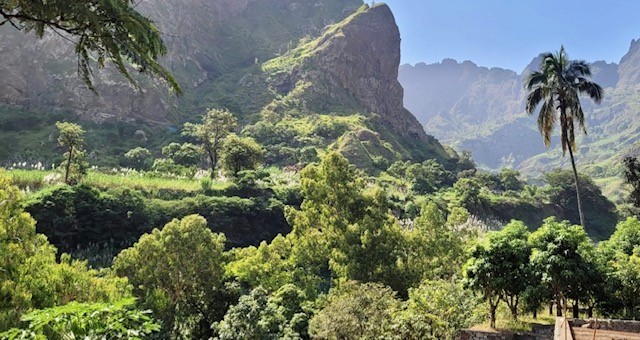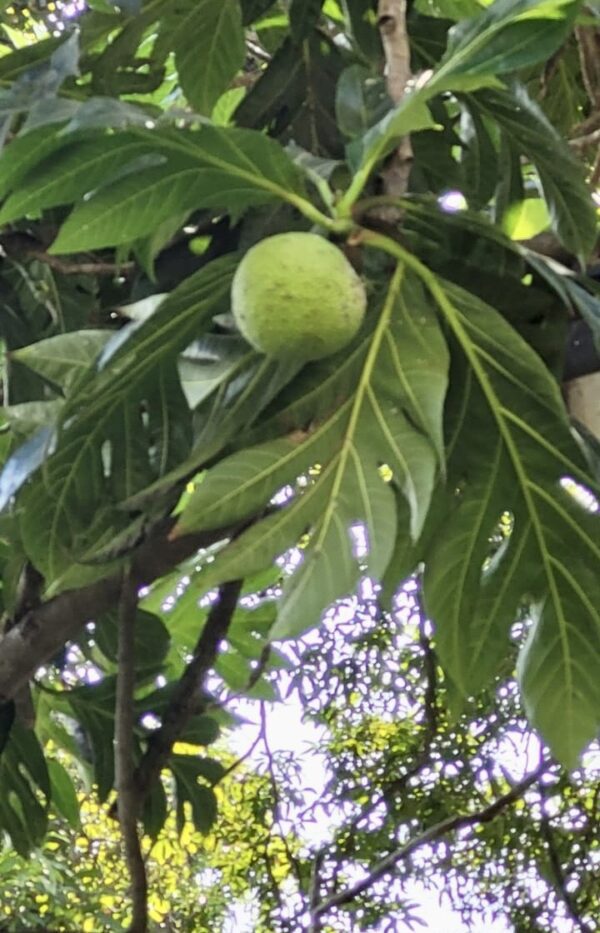Santo Antão is one of the ten volcanic islands that make up the Republic of Cabo Verde, located off the coast of West Africa. Getting there can be tricky: you need to reach the island of São Vicente first, where you take the boat to Santo Antão (read here how to get to the island).

Santo Antão is the westernmost island in the archipelago and is the second-largest island in terms of land area:
- Scenic landscape: Santo Antão is known for its dramatic, mountainous terrain, with steep valleys and ridges that offer stunning views of the ocean and neighboring islands. The island is a popular destination for hiking and trekking enthusiasts.
- Agriculture: Santo Antão is also known for its agriculture, particularly its production of sugar cane, fruits, and vegetables. The island’s fertile soil and favorable climate make it ideal for farming.
- Fishing: Fishing is also an important industry on Santo Antão, with many local fishermen providing fresh seafood to the island’s residents and visitors.
- Cultural diversity: The island has a diverse population, with influences from Africa, Europe, and the Caribbean. This is reflected in the island’s music, art, and cuisine.
- Colonial architecture: The island has several historic towns and villages, many of which feature colonial architecture from the 18th and 19th centuries.
- Beaches: Although Santo Antão is primarily known for its rugged terrain, the island does have several beautiful beaches, particularly on the northern and eastern coasts.
Overall, Santo Antão is a beautiful and unique island with a rich cultural and natural heritage. Its dramatic landscape, agriculture, fishing, and cultural diversity make it a must-visit destination for travelers interested in exploring the beauty and history of Cabo Verde.
What can you do in Santo Antão?
Santo Antão is a beautiful and diverse island in Cabo Verde, with plenty of activities and attractions to enjoy. Here are some things to do in Santo Antão:
- Hiking and Trekking: Santo Antão is known for its rugged and dramatic terrain, with plenty of trails and paths for hiking and trekking. One of the most popular routes is the Cova-Paul-Ribeira da Torre trail, which takes you through stunning valleys and mountain ridges.
- Visit Paul Valley: Paul Valley is a lush, green valley located in the center of Santo Antão. It’s home to several small villages, as well as coffee and banana plantations. You can take a guided tour of the valley or explore it on your own.
- Eat or Stay over night in Paúl: you will find restaurants and hotels for your stay, like Hotel Pedracim.
- Explore the town of Ribeira Grande: Ribeira Grande is the largest town on Santo Antão and is home to several historic buildings, including the Church of Our Lady of the Rosary, the Municipal Market, and the old colonial prison.
- Visit the village of Fontainhas: Fontainhas is a picturesque village located on a cliff overlooking the ocean. It’s known for its colorful houses and stunning views.
- Try the local cuisine: Santo Antão has a unique and delicious cuisine, with plenty of seafood and fresh produce. Be sure to try the national dish, Cachupa, as well as other local specialties like grilled fish, feijoada, and pastels.
- Relax on the beach: Santo Antão has several beautiful beaches, including Tarrafal Beach and Cruzinha Beach, which are perfect for swimming and sunbathing.
- Visit the viewpoint of Boca de Pistola: Boca de Pistola is a popular viewpoint that offers stunning views of the island’s rugged coastline and the Atlantic Ocean.
Overall, Santo Antão is a beautiful and diverse island with plenty of activities and attractions to enjoy. Whether you’re interested in hiking, exploring local culture, or simply relaxing on the beach, Santo Antão has something for everyone.



